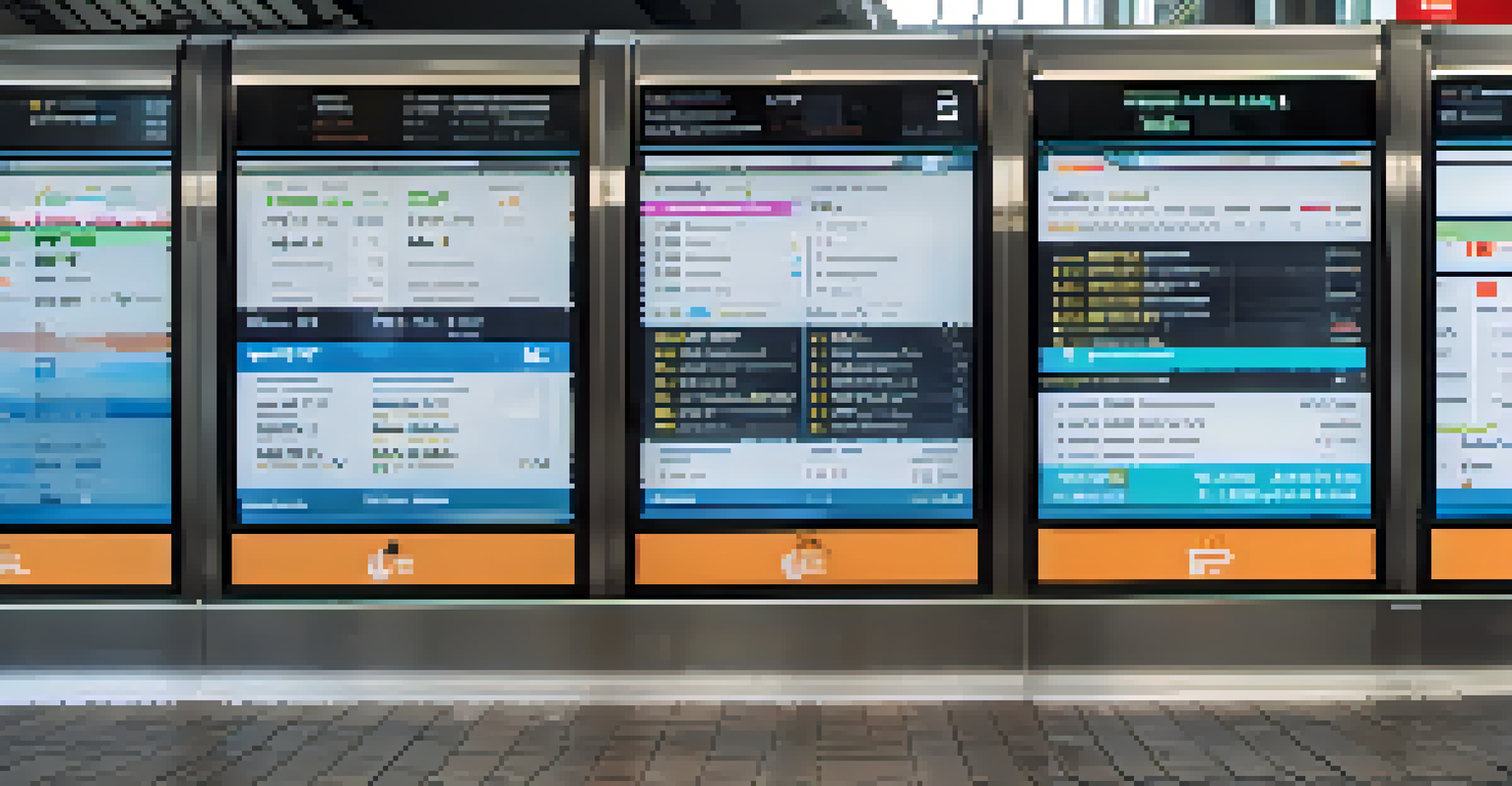Public-Private Partnerships: Funding Public Transport Initiatives

Understanding Public-Private Partnerships (PPPs) in Transport
Public-Private Partnerships, or PPPs, are collaborations between government entities and private sector companies. These partnerships aim to finance, build, and operate public infrastructure projects, including transport systems. By combining public oversight with private expertise and capital, PPPs can deliver projects more efficiently and effectively.
Public-private partnerships can help bridge the gap between public needs and private capabilities, making them an attractive option for enhancing public transportation systems worldwide.
Imagine a local government needing to upgrade its aging bus fleet. Instead of shouldering the entire financial burden, it can partner with a private company that provides the necessary funding and modern technology. This approach not only alleviates the fiscal pressure on the government but also brings in innovative solutions from the private sector.
Ultimately, PPPs help bridge the gap between public needs and private capabilities, making them an attractive option for enhancing public transportation systems worldwide.
Benefits of PPPs in Public Transport Funding
One of the most significant advantages of PPPs is the ability to leverage private investment. Governments often face budget constraints, making it challenging to fund large-scale transport projects. However, by engaging private partners, they can access additional capital and resources, accelerating project timelines and improving service delivery.

For instance, a metro rail project that might take years to fund through traditional means can be fast-tracked with a PPP arrangement. The private partner can invest upfront and recoup costs through fares or advertising revenue over time. This win-win situation ensures that both parties have a vested interest in the project's success.
PPPs Enhance Transport Funding
Public-Private Partnerships enable governments to access private investment, accelerating the development of critical transport infrastructure.
Moreover, PPPs encourage innovation, as private companies are motivated to implement the latest technologies and efficiencies to maximize their returns. This can lead to enhanced public transport services that meet the evolving needs of commuters.
Challenges Faced in Implementing PPPs
Despite their many benefits, PPPs are not without challenges. One major hurdle is the complexity of these agreements, which often require extensive negotiation and legal expertise. Misunderstandings or poorly defined terms can lead to disputes, delaying projects and increasing costs.
The involvement of private companies in public transport projects can accelerate timelines and improve service delivery, ultimately benefiting the community.
Additionally, there is a risk of misalignment between public goals and private profit motives. If not carefully managed, a private partner may prioritize financial returns over the quality of service, leaving the public at a disadvantage. This necessitates strong governance frameworks to ensure accountability and transparency.
Lastly, public perception can be a barrier. Some citizens may view PPPs skeptically, fearing that private involvement could lead to higher fares or reduced service quality. Addressing these concerns through open communication and community engagement is essential for the success of any PPP initiative.
Successful Examples of PPPs in Public Transport
Around the globe, several successful PPP examples highlight the potential of this funding model in public transport. The London Underground, for instance, has benefited from private investment to upgrade its infrastructure and improve service reliability. This collaboration has resulted in a more efficient transport system for millions of commuters.
In Australia, the Sydney Light Rail project showcases another successful PPP. The project, which faced delays and budget overruns, ultimately thrived due to the partnership with private firms that brought in expertise and innovation, ensuring the project was delivered on time and within budget.
Challenges in PPP Implementation
Complex agreements and potential misalignment of goals between public interests and private profit can hinder the success of PPP projects.
These examples illustrate that when executed well, PPPs can lead to significant improvements in public transport services, making them a viable option for cities aiming to enhance their infrastructure.
The Role of Government in PPP Success
For PPPs to succeed, government involvement is crucial. It’s not just about finding a private partner; it’s also about setting clear objectives and maintaining oversight throughout the project lifecycle. This includes establishing a regulatory framework that protects public interests while allowing for private innovation.
Governments must also engage in thorough planning and feasibility studies before entering a PPP. This ensures that the chosen projects align with community needs and can deliver long-term benefits. By taking these steps, public authorities can foster an environment where PPPs can thrive.
Moreover, fostering a collaborative relationship with private partners is essential. Regular communication and feedback mechanisms can help address any emerging issues promptly, ensuring that the project stays on track and meets its goals.
Evaluating the Impact of PPPs on Public Transport
Evaluating the impact of PPPs is fundamental to understanding their effectiveness in public transport funding. Key performance indicators such as ridership numbers, service reliability, and customer satisfaction can provide valuable insights into how well a PPP is performing. Regular assessments help stakeholders make informed decisions and adjustments as necessary.
Furthermore, financial metrics like return on investment (ROI) and cost savings can illustrate the economic benefits of these partnerships. By analyzing these data points, both public and private partners can demonstrate the value PPPs bring to the table, enhancing public support for future initiatives.
Future Trends Favor Sustainability
Emerging trends in public transport PPPs are focusing on sustainability and digital transformation to enhance service delivery and community engagement.
Ultimately, a robust evaluation process fosters transparency and accountability, ensuring that public resources are used efficiently and effectively while meeting the transport needs of the community.
Future Trends in Public Transport PPPs
As the landscape of public transport evolves, so too do the trends in PPPs. One emerging trend is the increasing focus on sustainability. With growing concerns about climate change, more PPP projects are incorporating green technologies and practices, such as electric buses and energy-efficient infrastructure.
Digital transformation is another key trend. The integration of smart technologies, like real-time tracking and contactless payments, is becoming a standard expectation in modern transport systems. PPPs that embrace these innovations can enhance user experience and operational efficiency, making public transport more appealing.

Finally, community engagement is gaining prominence. Future PPP projects are likely to involve more public input in the planning process, ensuring that the resulting transport solutions truly reflect the needs and desires of the communities they serve.